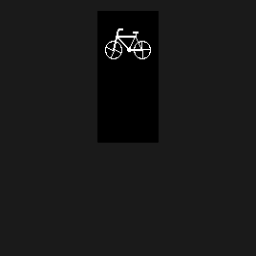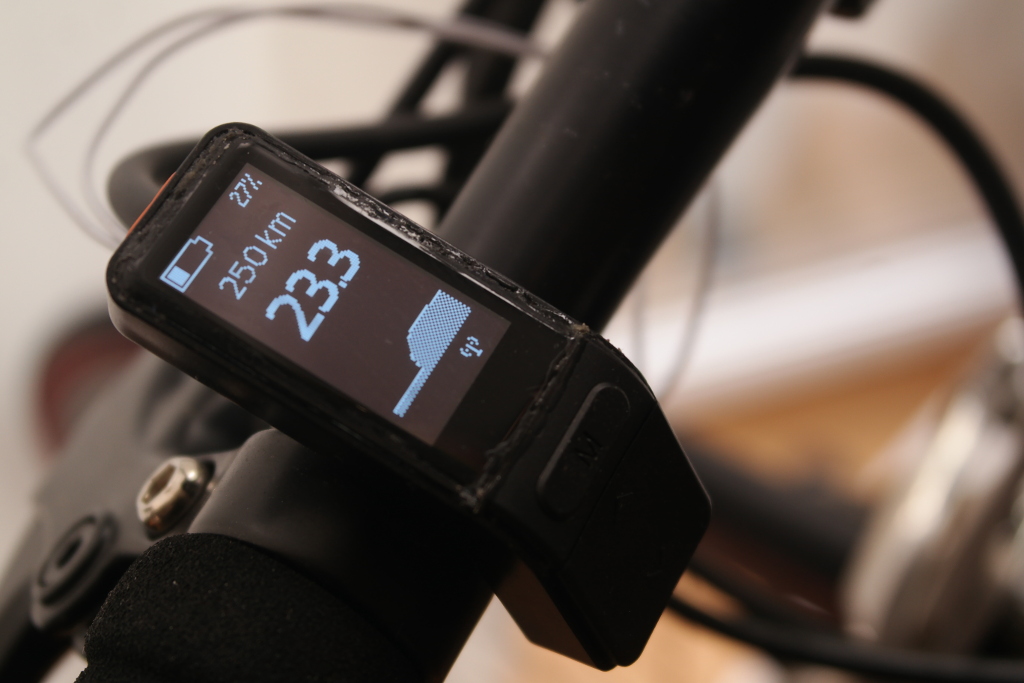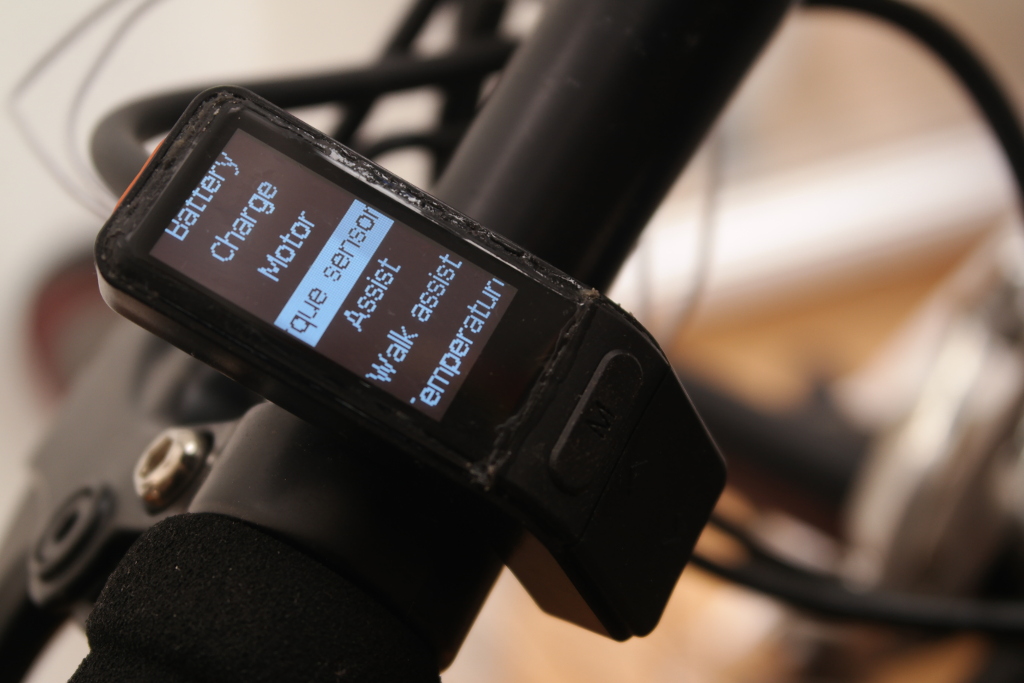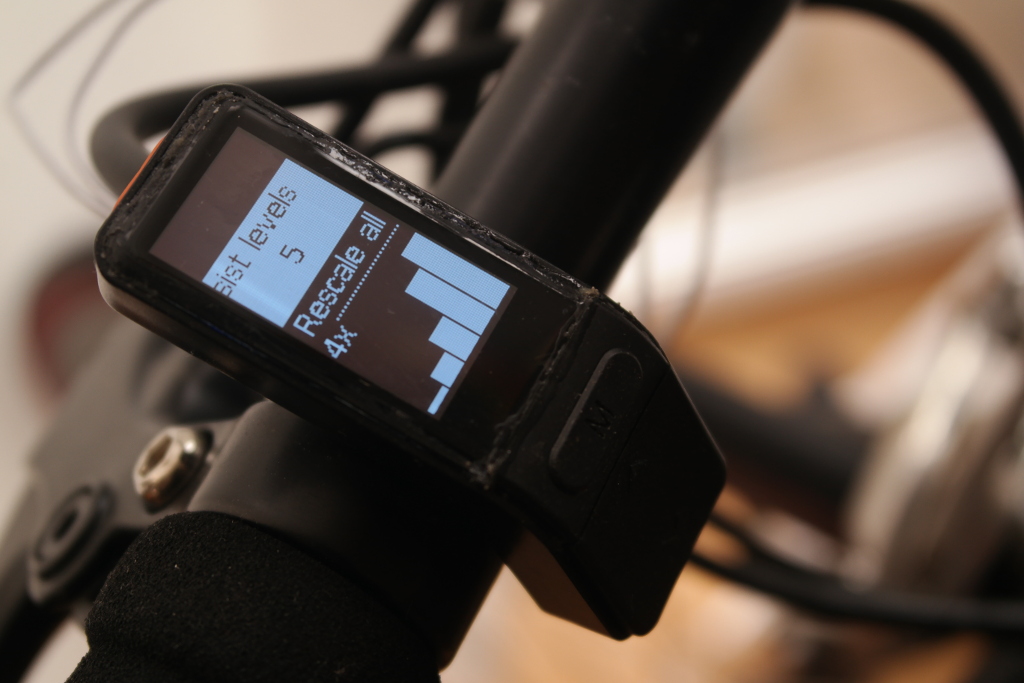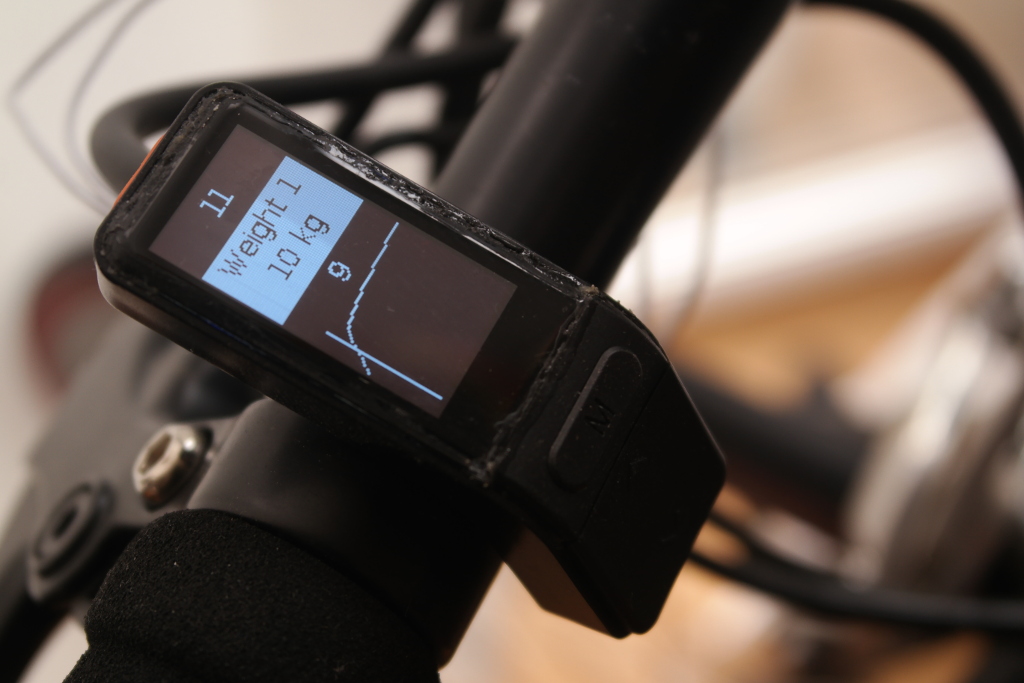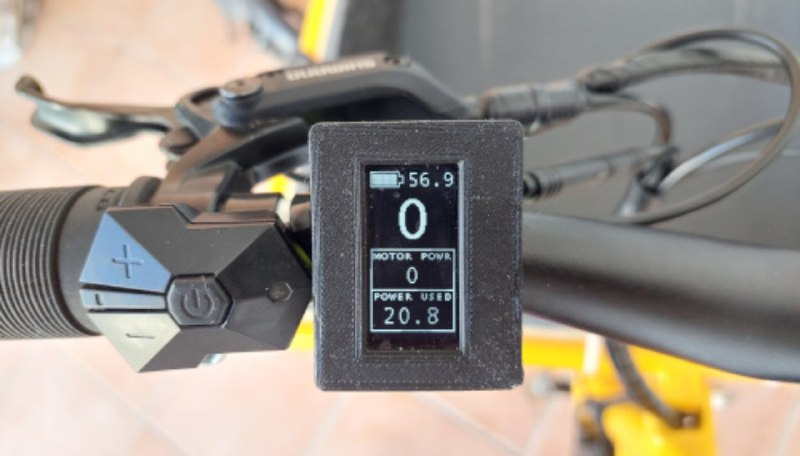Hello everyone.
I wasn't satisfied with the open source UI for the SW102 display, so I've made a different version. Functionally it's the same but it looks better IMHO. I encourage you to try it

It's mostly compatible with casainho's original code - you can switch between my version and the 1.1.0 release with OTA update and your settings will be preserved.
This is the addres of my github repo: https://github.com/anszom/SW102_LCD . You can find slightly more information there, including short usage and installation instructions. A prebuilt update image is available on the releases page.
Here's an animated demo of the firmware' s functionality (this was recorded with an "emulator" build. It's difficult enough to take good pictures of an OLED, let alone do it while riding a bike

. The real display runs as smooth as you can see in the gif. And below you can see some actual photos.
Main screen. Please disregard the butchered display casing, I've had to entirely rebuild the damn thing after I've fried the CPU with wrong voltages.
Config menu:
Assist level configuration:
Torque sensor calibration:
As a bonus, it should be easy to port this to casainho's DIY display, as the electronics are quite similar.


